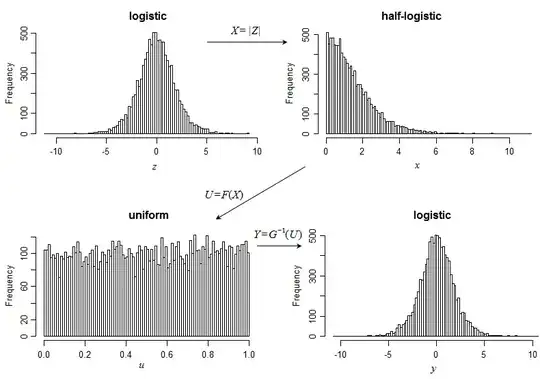Let $$f(x) = \frac{e^x}{(1+e^x)^2}~,~ -\infty \lt x \lt \infty~~~~~(1)$$ be the standard logistic pdf of a random variable $X$. Then one can obtain the pdf of the log-logistic distribution via the transformation $$ \log T = Y = a+bX ~,~b\gt 0~,~ -\infty \lt a \lt \infty~ $$ as $$ f(t) = \frac{1}{bt} \cdot \frac{\exp\left(\frac{\log t - a}{b}\right)}{\left( 1 + \exp\left( \frac{\log t - a}{b} \right)\right)^2}~,~ t\gt 0 ~~~~~~~(2).$$ Now Consider the logistic distribution truncated at $0$. Its pdf is given by $$ \frac{2e^x}{(1+e^x)^2}~,~ 0 \lt x \lt \infty~~~~(3). $$
Is there a transformation that can be used to obtain the log-logistic distribution from $(3)$?
